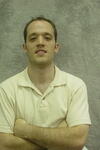Michael Metcalfe
Quantum computation is a relatively new field of research, which uses the properties of quantum mechanical systems for information processing. While most proposals for constructing such a quantum computer involve using microscopic degrees of freedom such as those of trapped ions or nuclear spins, this thesis concentrates on using the collective electromagnetic response of a macroscopic electrical circuit to construct the fundamental building block of a quantum computer—a qubit. These macroscopic systems are inherently more difficult to protect from decoherence compared to the microscopic qubit systems because of strong environmental coupling through, for example, the measurement leads. However, superconducting quantum circuits should be easier to scale to large multi qubit systems since they involve simple electrical elements, such as inductors and capacitors for coupling qubits. Furthermore, they can be produced using the highly developed fabrication techniques of integrated circuits.
One of the outstanding issues in superconducting qubit circuits is to read out the qubit state without introducing excessive noise. Such a readout scheme requires speed, sensitivity and should minimally disturb the qubit state. To meet these requirements we have developed a new type of dispersive bifurcating amplifier, called the cavity bifurcation amplifier (CBA), which consists of a Josephson junction imbedded in a microwave on-chip resonator. The optimum resonator design is based on a simple coplanar waveguide (CPW), imposing a pre-determined frequency and whose other RF characteristics like the quality factor are easily controlled and optimized.
The CBA is sensitive to the susceptibility of the superconducting qubit with respect to an external control parameter (e.g., flux) and hence during both qubit manipulation and readout sequences, the qubit can be biased on a so-called “sweet spot”, where it is immune to first order fluctuations in this parameter. This readout has no on-chip dissipation, minimizing the back-action on the qubit states. Furthermore, due to the CBA’s megahertz repetition rate and large signal to noise ratio, we can measure drifts in qubit parameters in real time and either compensate for these drifts as they are detected, or simply study them to discover their source.
In addition, the CPW resonator architecture of the CBA is easily multiplexed on-chip, enabling the simultaneous readout of several qubits at different frequencies; opening the door to scalable quantum computing.
